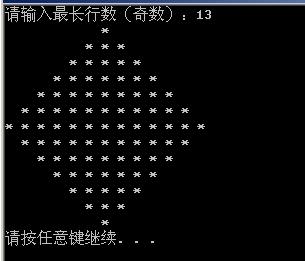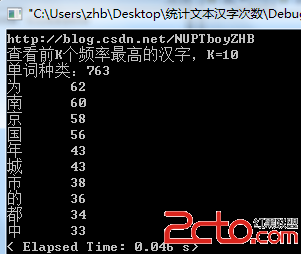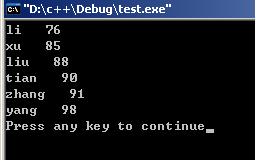C++流操作之fstream
在Windows平台对文件进行存取操作可选的方案有很多,如果采用纯C,则需要用到File*等,当然也可以直接调用Windows API来做;如果采用C++,首先想到的就是文件流fstream。虽然在COM层面上,我们还可以使用IStream来实现文件的读写,其效率也非常高。不过本文仅对C++流操作做简单的探讨,相比于Windows API或IStream,C++的流操作通用性更好一些,因为你能轻松将代码移植到其它平台上。fstream有两个派生类,即ifstream和ofstream,分别对应输入文件流、输出文件流。在使用它们之前,必须将它们的头文件包含到你的cpp文件中。创建一个文件流的方法很简单:ifstream fin;fin.open("C:\filename.txt");这样就创建了一个输入文件流fin,它对应的文件是C盘根目录下的filename.txt。实际上,open方法还包含一个参数mode,用以指定其打开方式。ios::in 以读取方式打开文件ios::out 以写入方式打开文件ios::ate 存取指针在文件末尾ios::app 写入时采用追加方式ios::trunc 写入时抹去旧数据ios::binary 以二进制方式存取上面的代码并未指定任何打开方式,则采用默认参数:输入文件流即ios::in,输出文件流即ios::out。一般在需要组合特殊的mode才显式指定,比如:ios::in | ios::binary; //以二进制方式读取文件除此之外,还可以在构造时指定相应的文件路径和名称,让创建过程一步到位。上述代码可改写为:ifstream fin("C:\filename.txt");与open方法相反的是close方法,它的作用与open正好相反。open是将文件流对象与外设中的文件关联起来,close则是解除二者的关联。但是需要注意的是,close还起到清空缓存的作用。最好让open方法与close方法成对出现。创建并打开一个文件流后,就能像操作标准I/O那样使用流插入操作符(<<)与流提取操作符(>>)。对于输入文件流来说,可以调用getline函数从文件流中读取一整行数据,这样就可以读入含有空格的字符串。下面是一个例子,该例的作用是读取一个STLA格式的文件。STL是一种常用快速成像文件格式,其格式非常简单,特别是ASCII版本(即STLA)。代码如下所示:stdafx.h// stdafx.h : include file for standard system include files,// or project specific include files that are used frequently, but// are changed infrequently//#pragma once#include "targetver.h"#include <stdio.h>#include <tchar.h>//added#include <iostream>#include <sstream>#include <fstream>#include <string>#include <vector>using namespace std;// TODO: reference additional headers your program requires herereadstla.cpp// readstla.cpp : Defines the entry point for the console application.//#include "stdafx.h"struct facet {float normal[3];float vertex[3][3];};int _tmain(int argc, _TCHAR* argv[]){if (argc < 2) {printf("specify an input file!\n");return 1;}ifstream in(argv[1]);if (!in.is_open()) {printf("fail to open file!\n");return 1;}//varvector<facet> solid;string line;string word;//check formatgetline(in, line);if (line.find("solid") != 0) {printf("wrong file format!\n");in.close();return 1;}while (getline(in, line)) {if (line.find("facet normal") != string::npos) {facet f;//read normalstringstream ns(line);ns >> word; //eat "facet"ns >> word; //eat "normal"ns >> f.normal[0] >> f.normal[1] >> f.normal[2];//read verticesgetline(in, line); //"outer loop"for (int i = 0; i < 3; i++) {getline(in, line);stringstream vs(line);vs >> word; //eat "vertex"vs >> f.vertex[i][0] >> f.vertex[i][1] >> f.vertex[i][2];}getline(in, line); //"endloop"getline(in, line); //"endfacet"solid.push_back(f);}}in.close();//outputint cnt = solid.size();printf("read %d facet\n", cnt);for (int i = 0; i < cnt; i++) {facet& f = solid[i];printf("\nfacet %d:\nnormal = (%f, %f, %f)\n", \i+1, f.normal[0], f.normal[1], f.normal[2]);for (int j = 0; j < 3; j++) {printf("vertex[%d] = (%f, %f, %f)\n", \j+1, f.vertex[j][0], f.vertex[j][1], f.vertex[j][2]);}}return 0;}测试文件为:cube_corner.stlsolid cube_cornerfacet normal 0.0 -1.0 0.0outer loopvertex 0.0 0.0 0.0vertex 1.0 0.0 0.0vertex 0.0 0.0 1.0endloop补充:软件开发 , C++ ,上一个:两个数之和等于第三个数
下一个:IOS研究院之打开照相机与本地相册选择图片
- 更多C/C++疑问解答:
- 关于c++的cout输出的问题。
- 在学校里学过C和C++,不过学的很一般,现在自学C#,会不会很难?
- 全国计算机二级C语言笔试题
- 已知某树有2个2度结点,3个3度结点,4个4度结点,问有几个叶子结点?
- c++数据结构内部排序问题,整数排序
- 2012九月计算机二级C语言全国题库,,急求急求
- 如果assert只有一个字符串作为参数,是什么意思呢?
- C语言中,哪些运算符具有左结合性,哪些具有右结合性,帮忙总结下,谢谢了!
- 为什么用结构体编写的程序输入是,0输不出来啊~~~
- 将IEEE—754的十六进制转化为十进制浮点类型,用C或C++都行,多谢各位大侠啊,非常感谢!
- 为什么这个程序求不出公式?
- 这个链表倒置的算法请大家分析下
- c语言函数库调用
- C语言unsigned int纠错
- C语言快排求解啊





